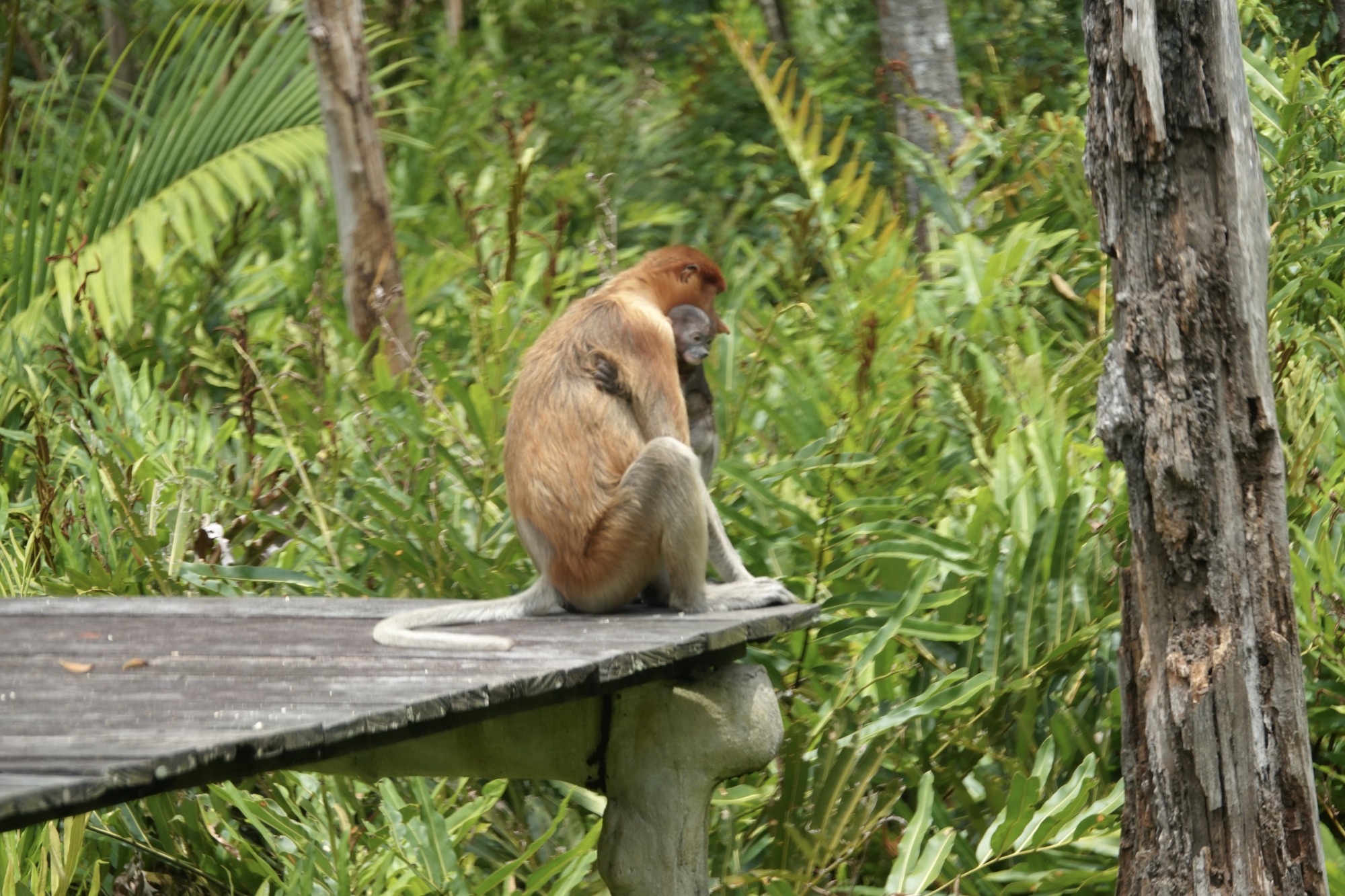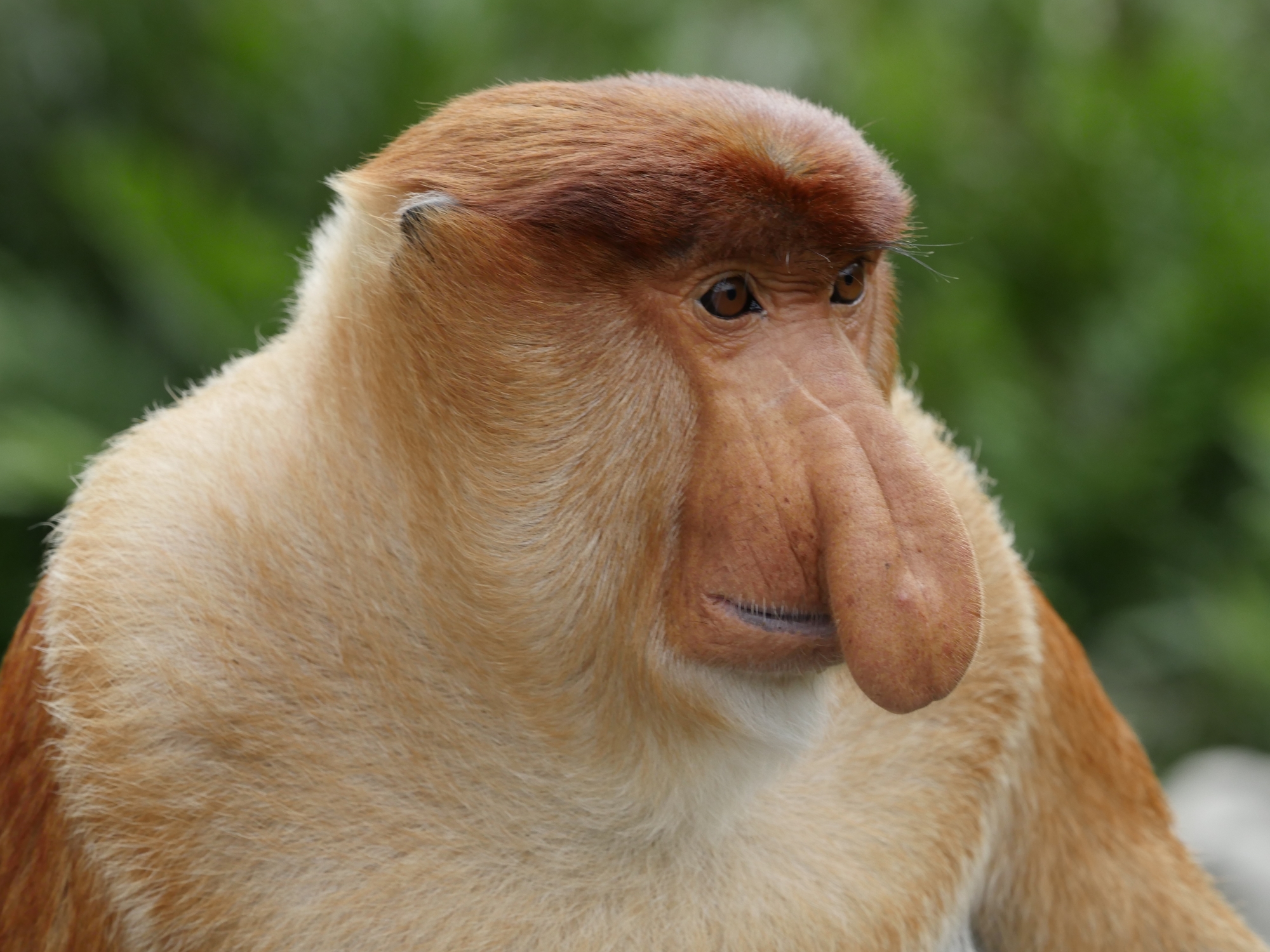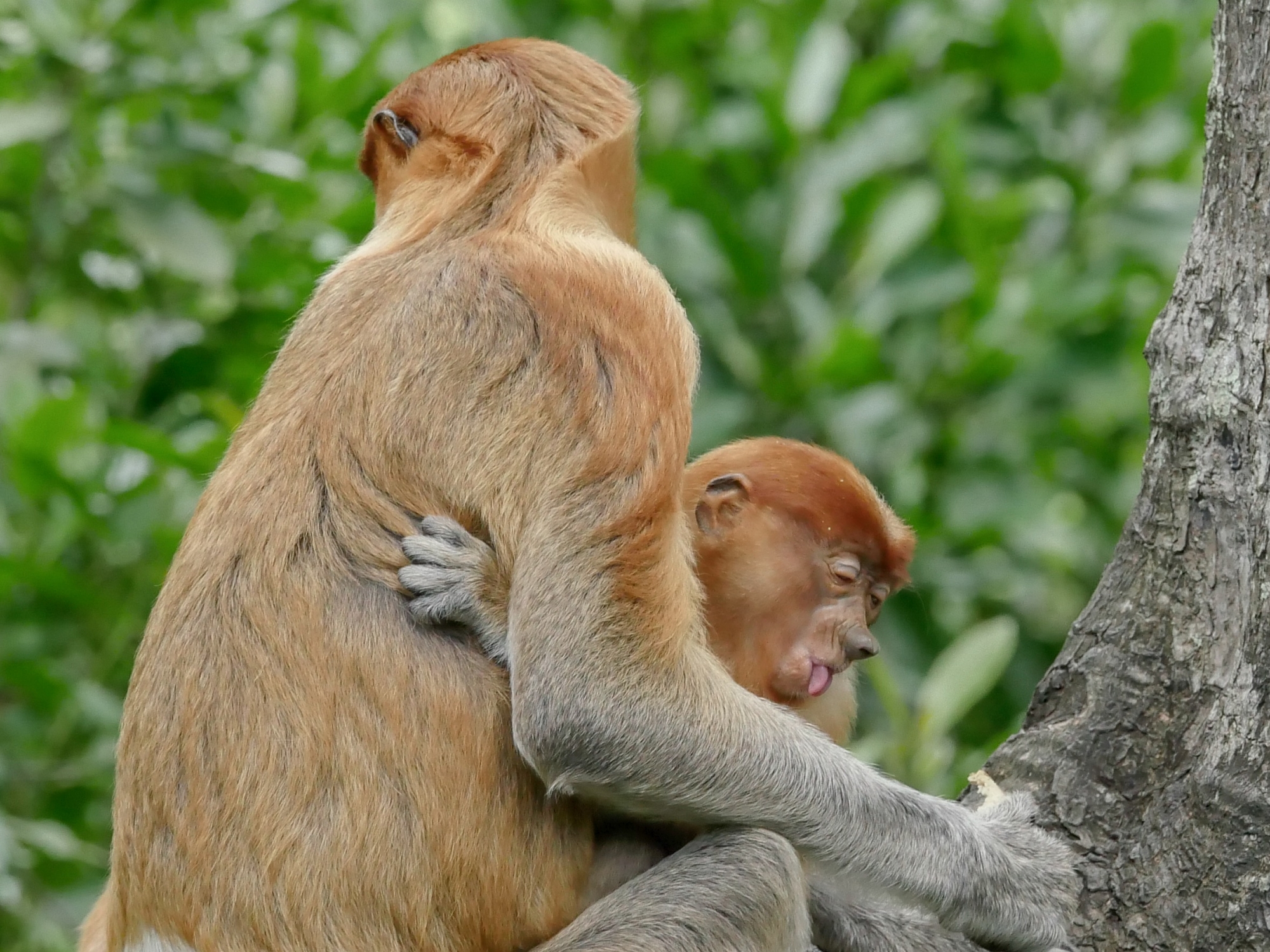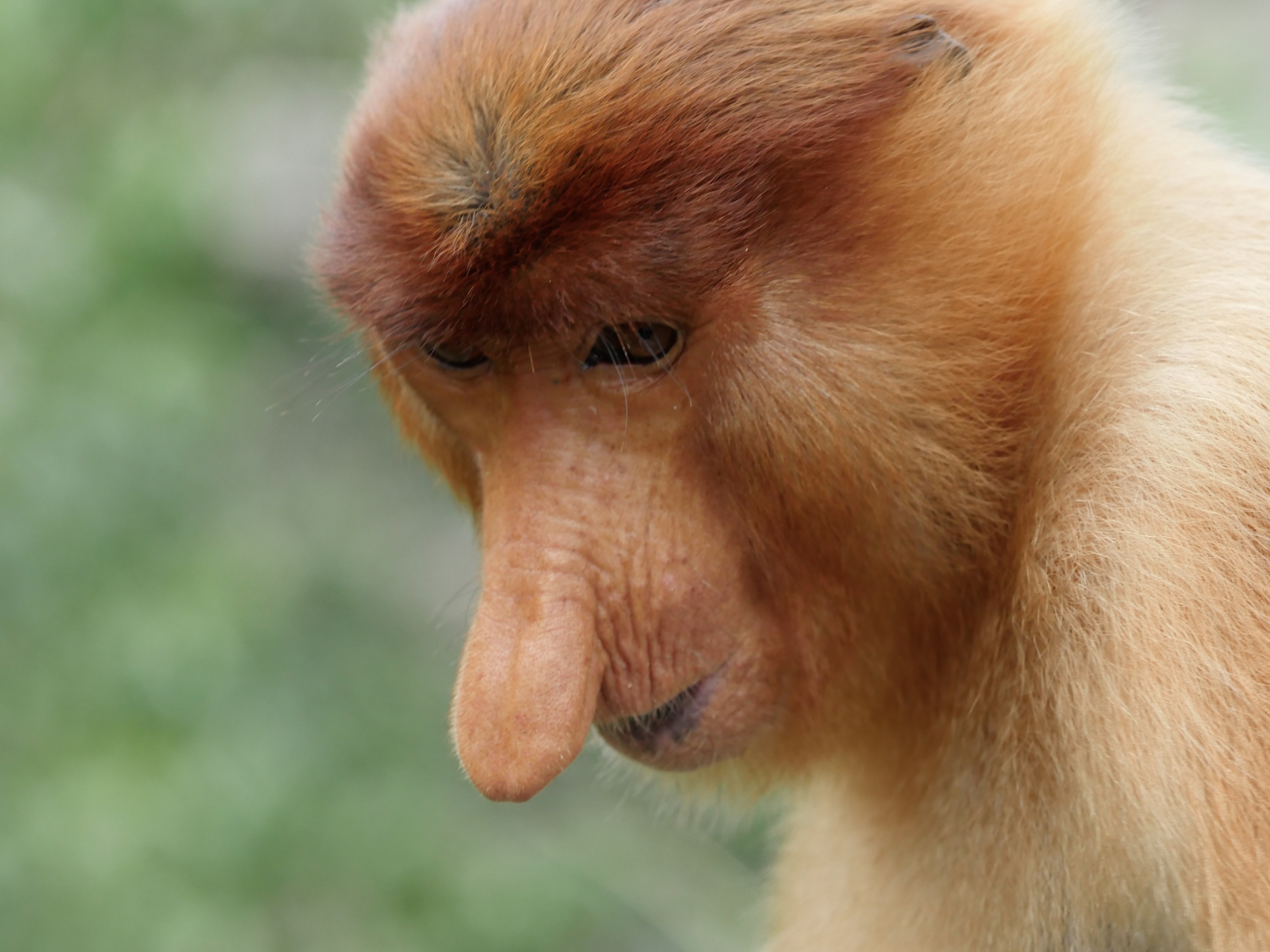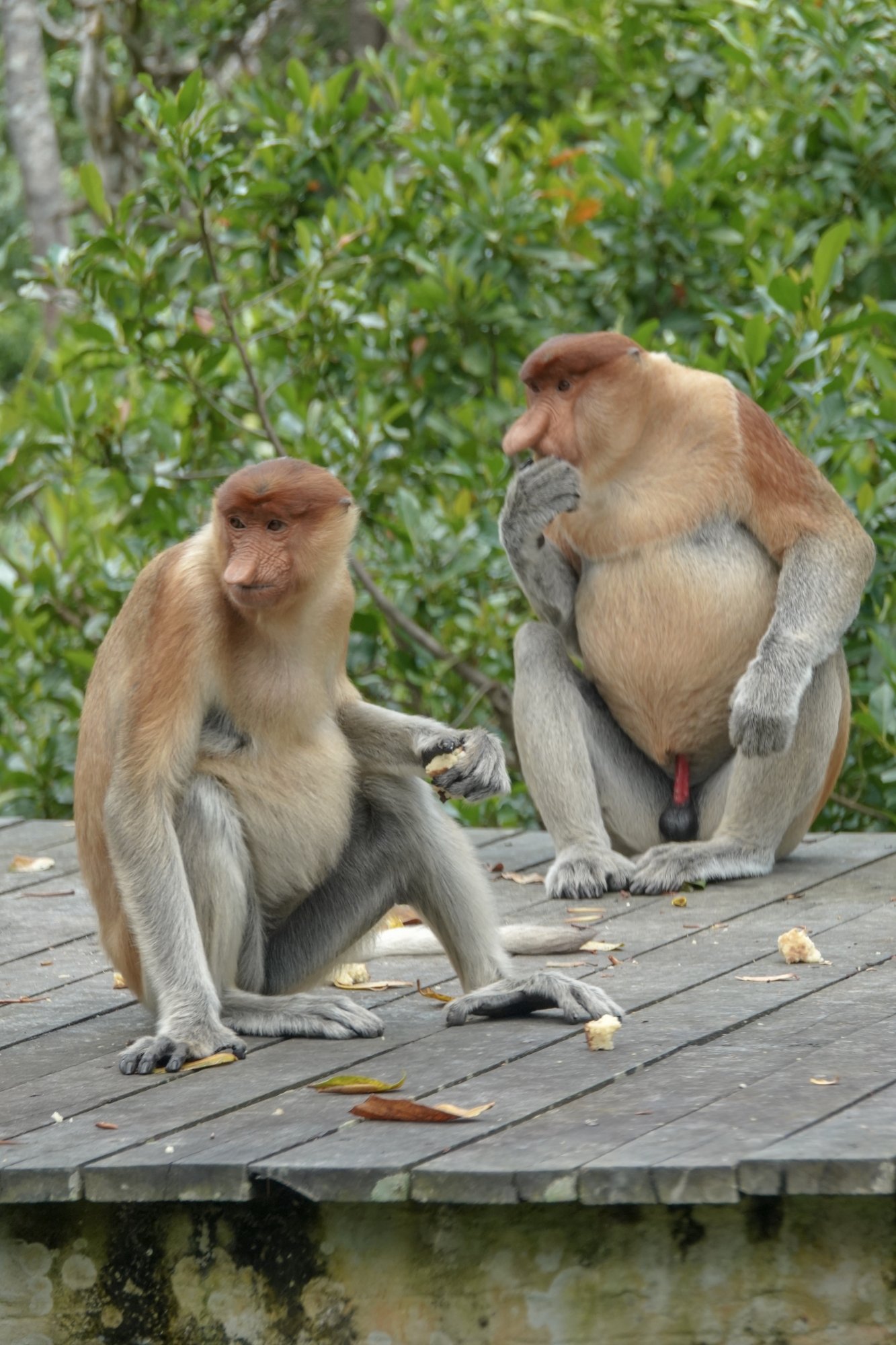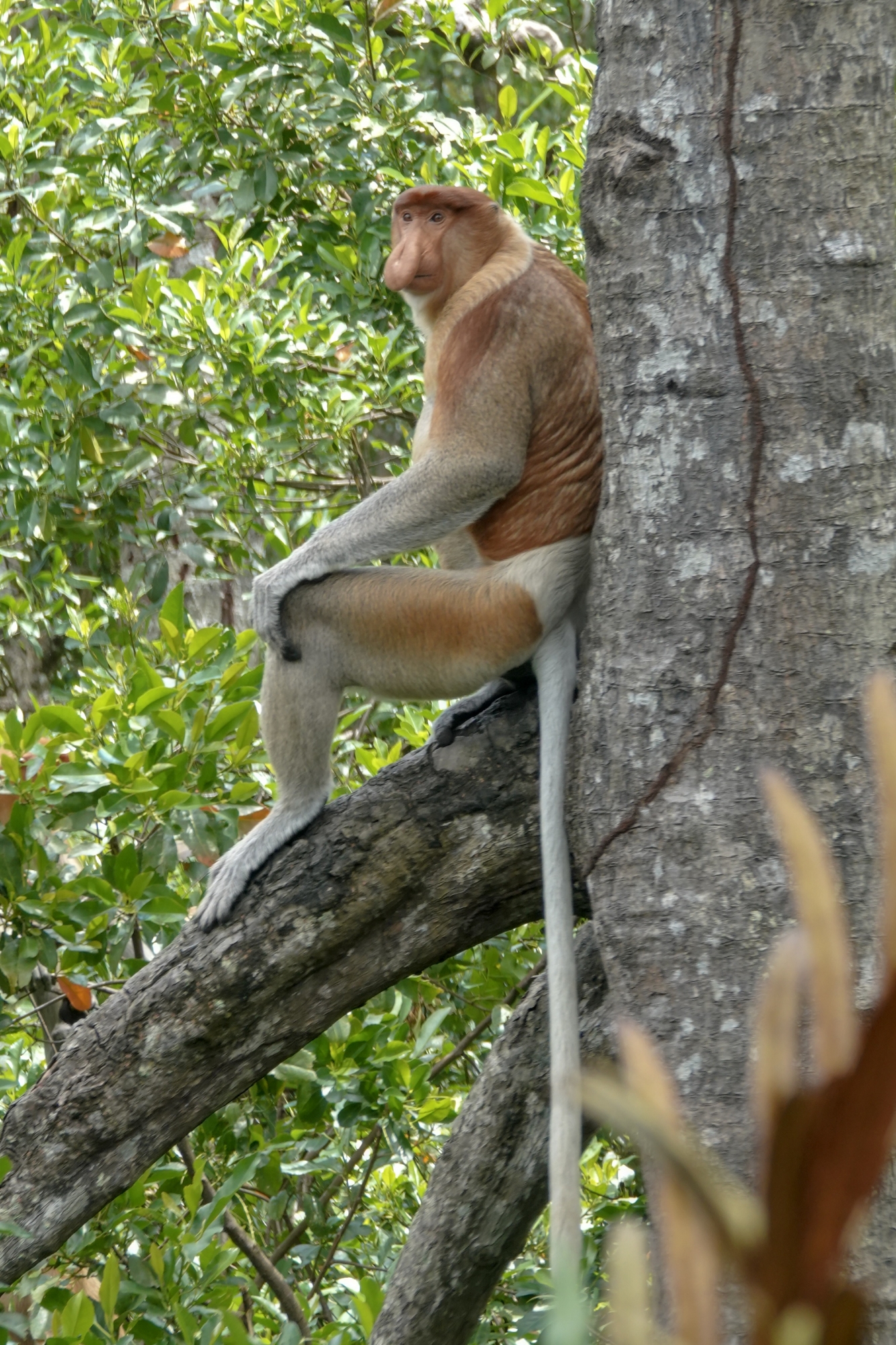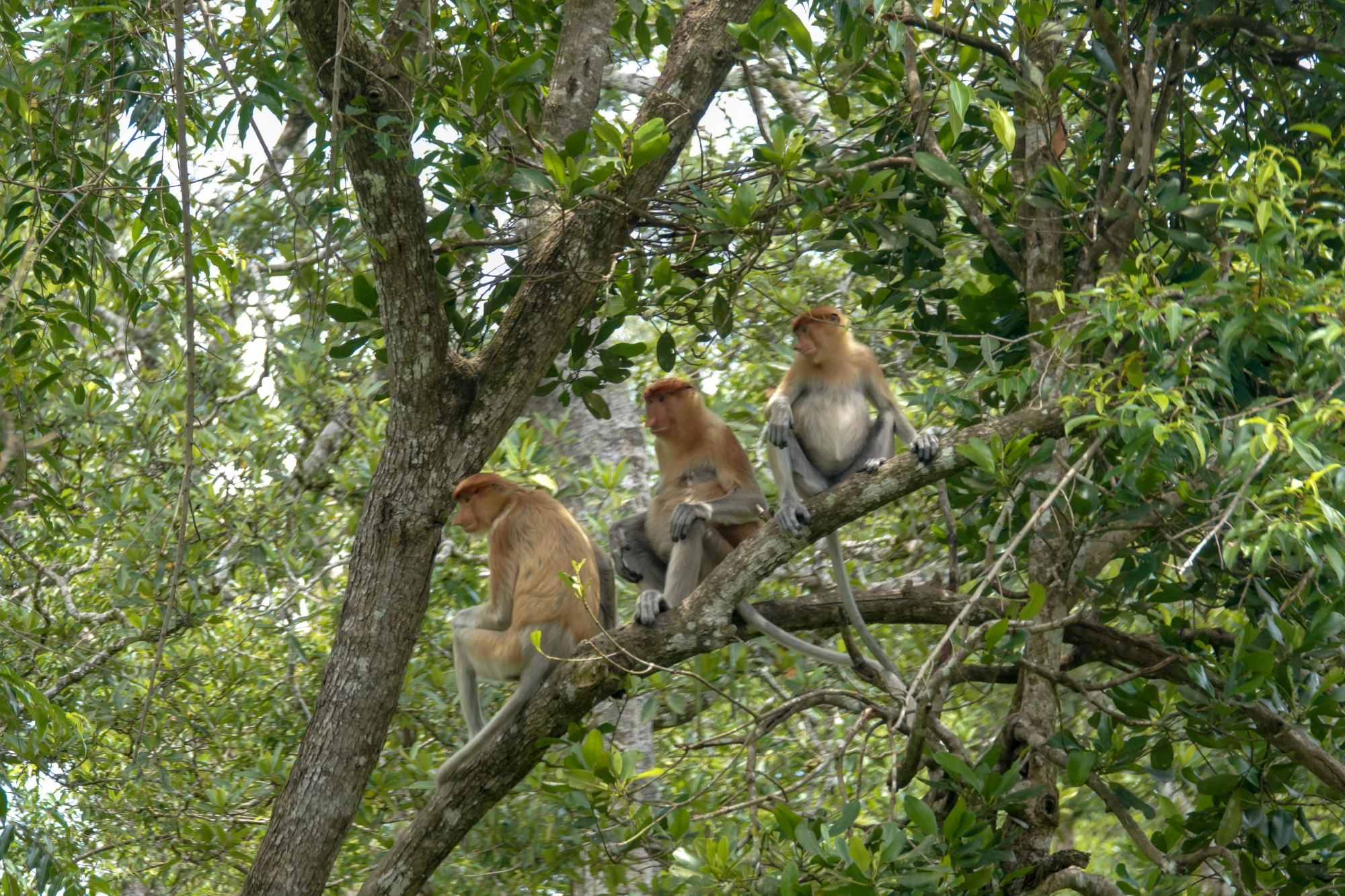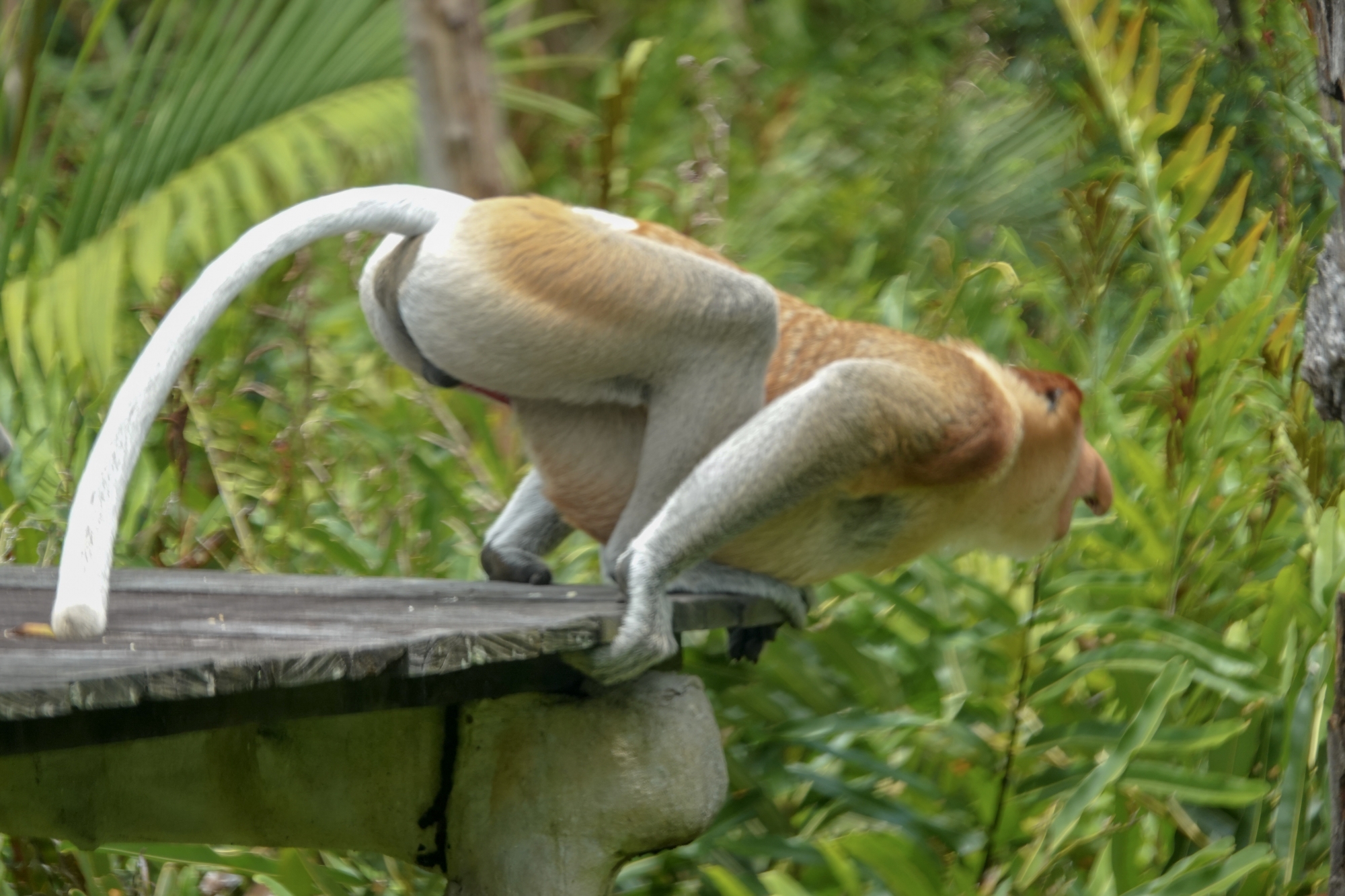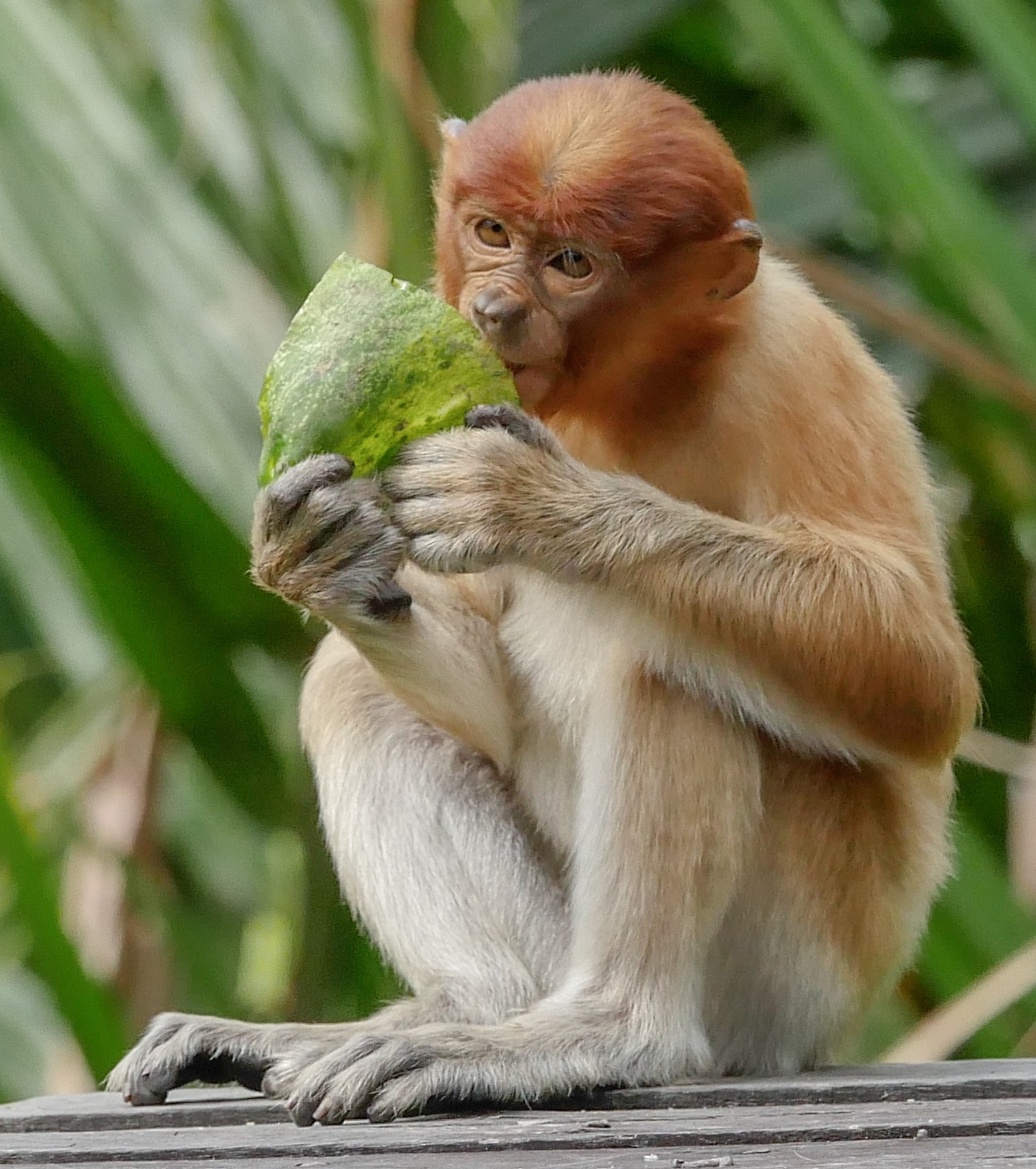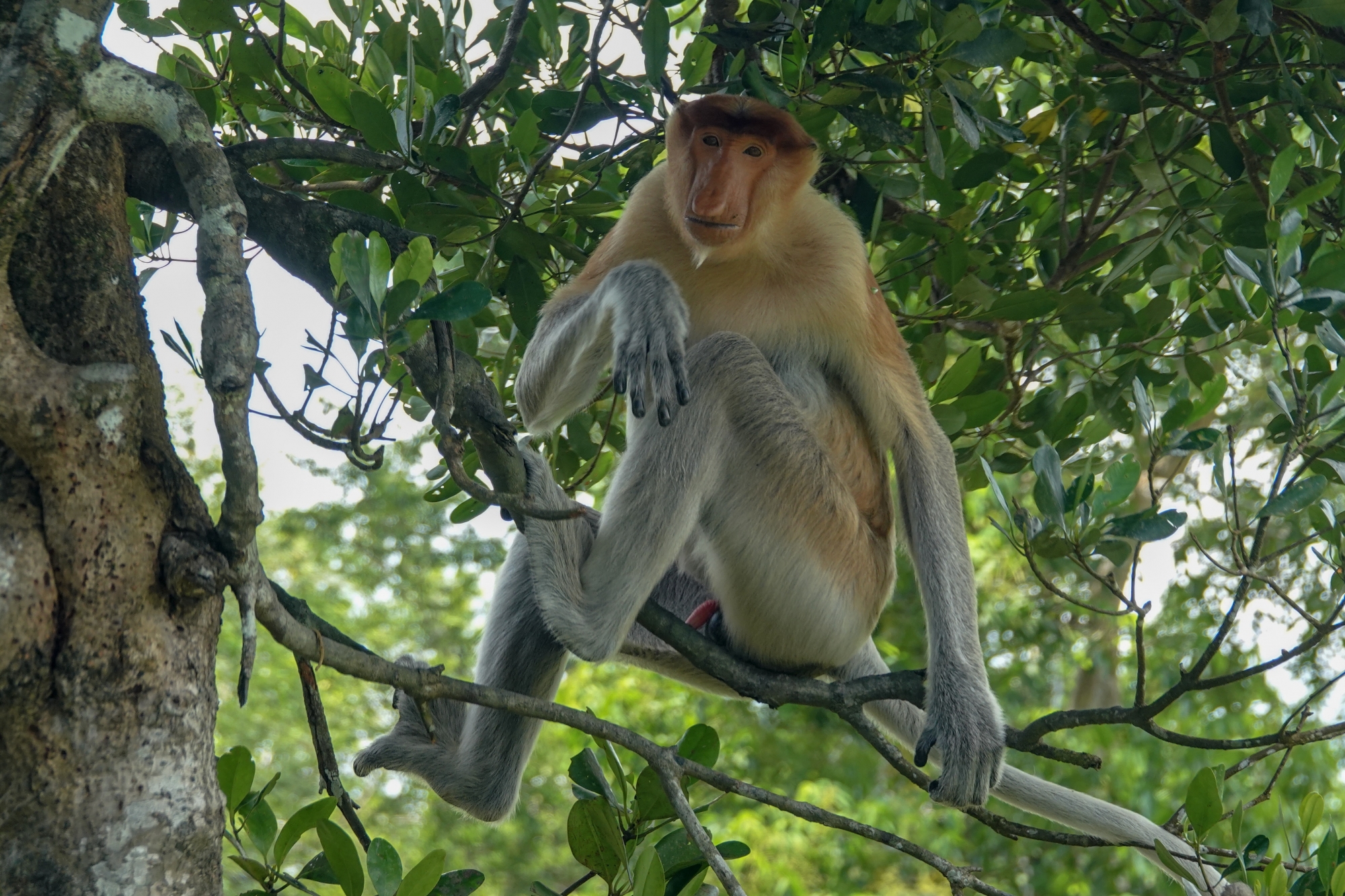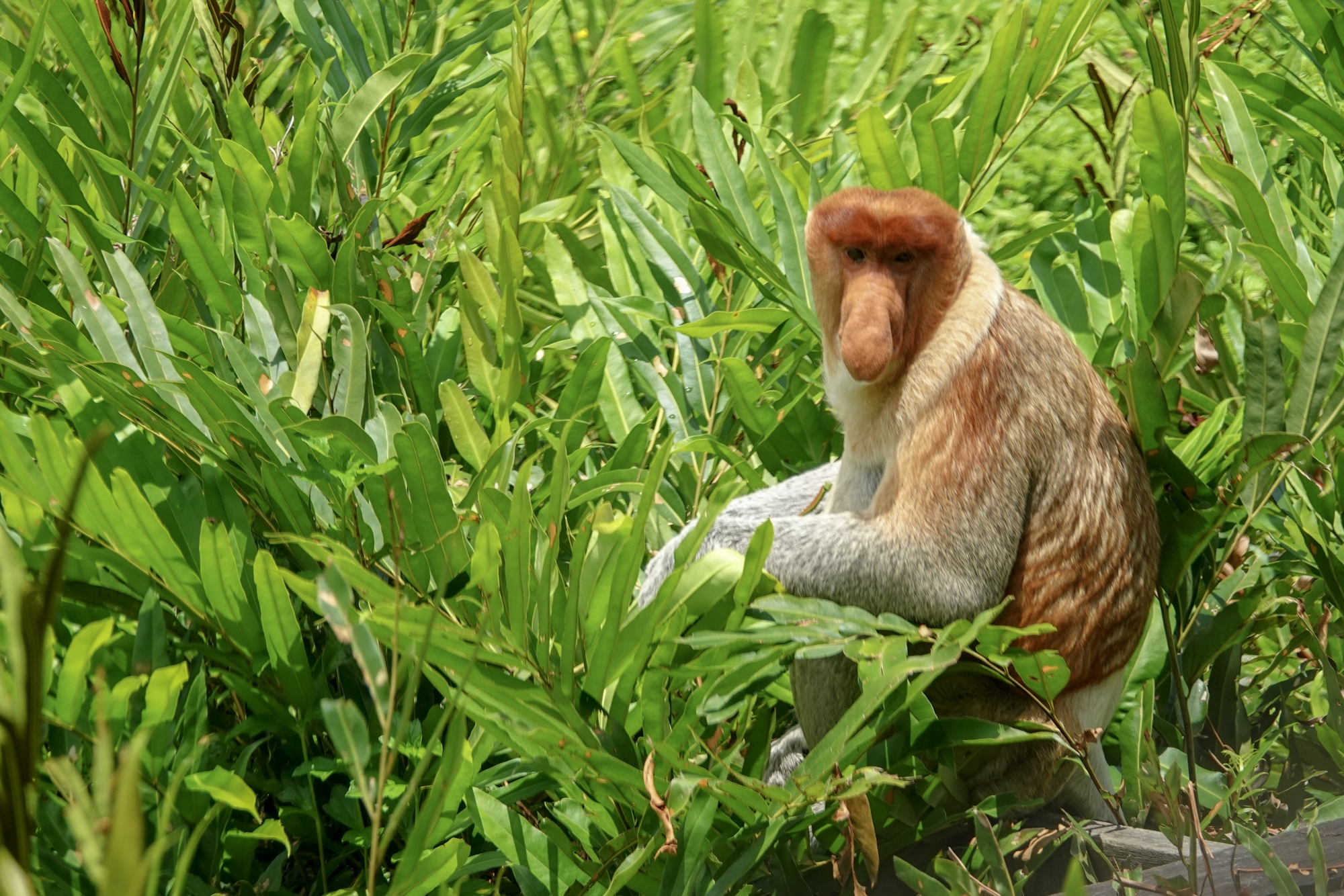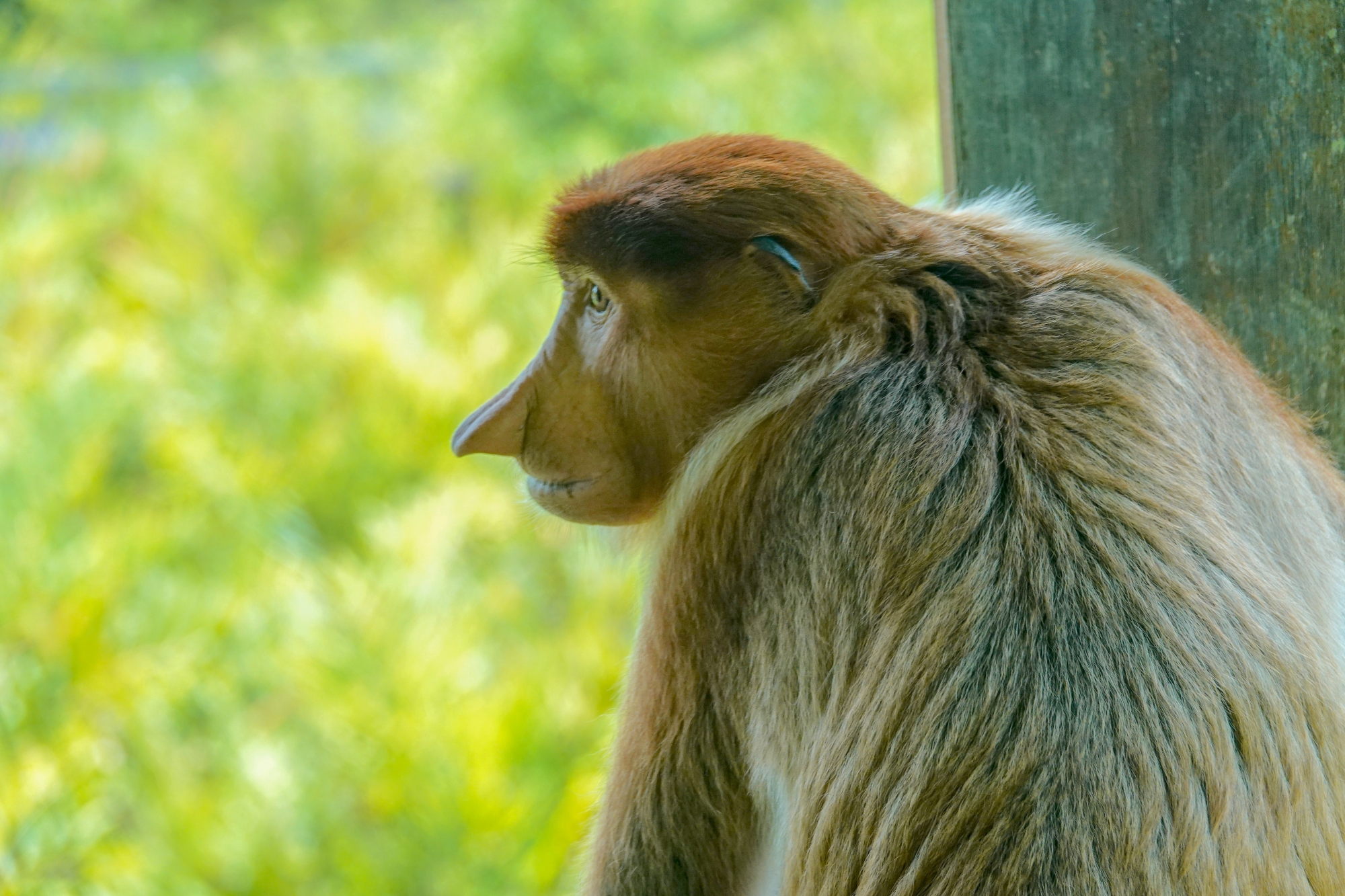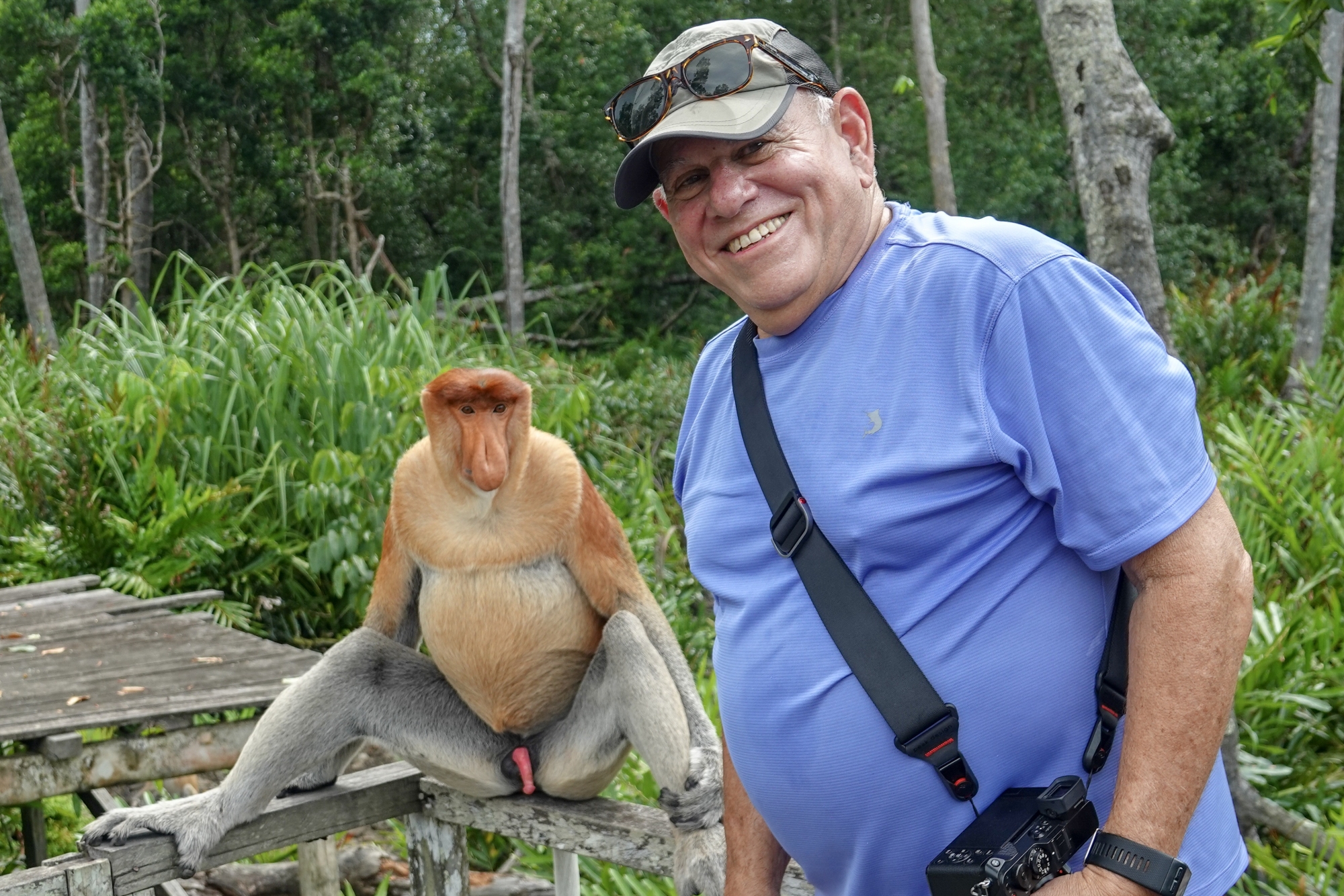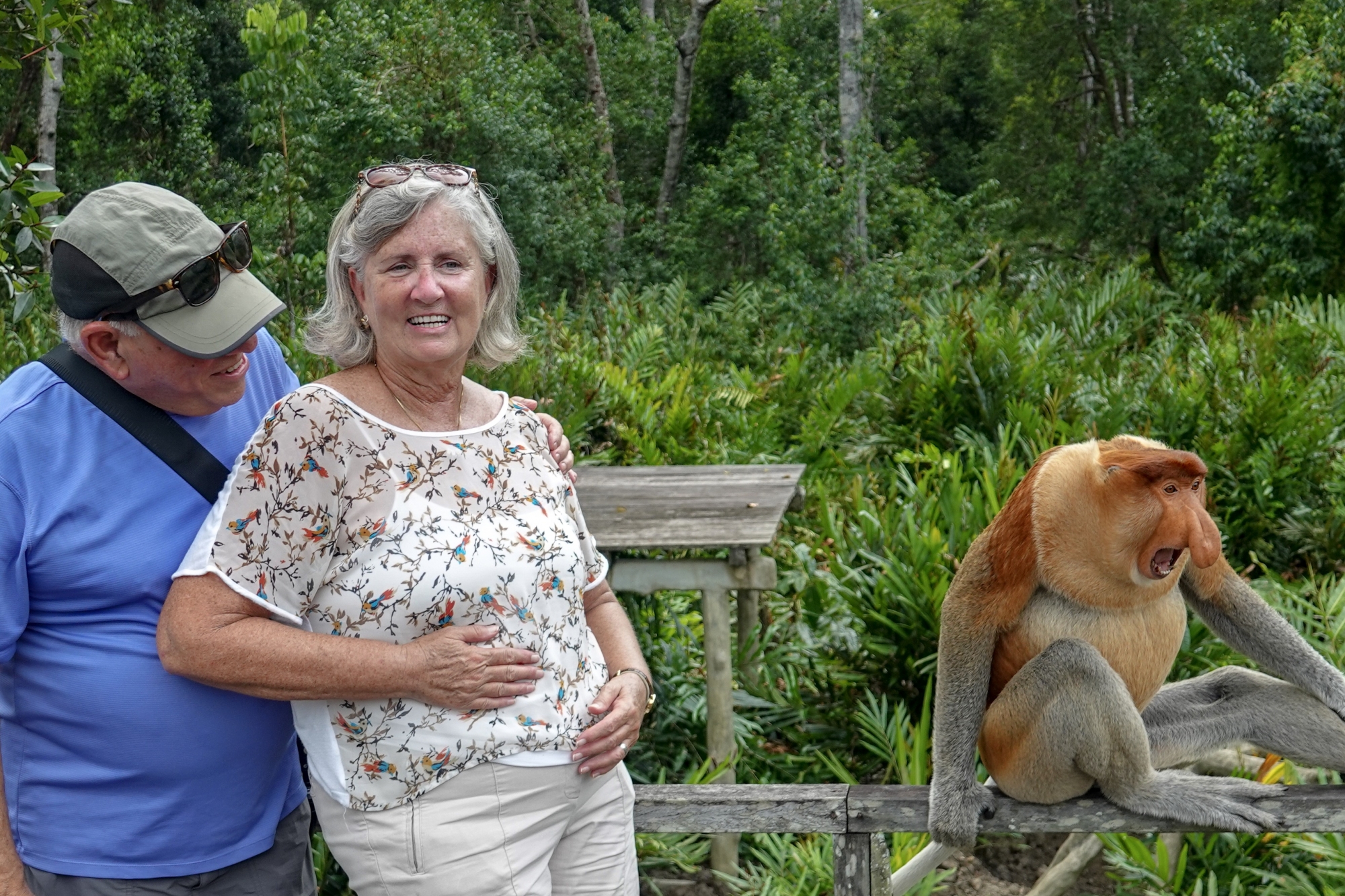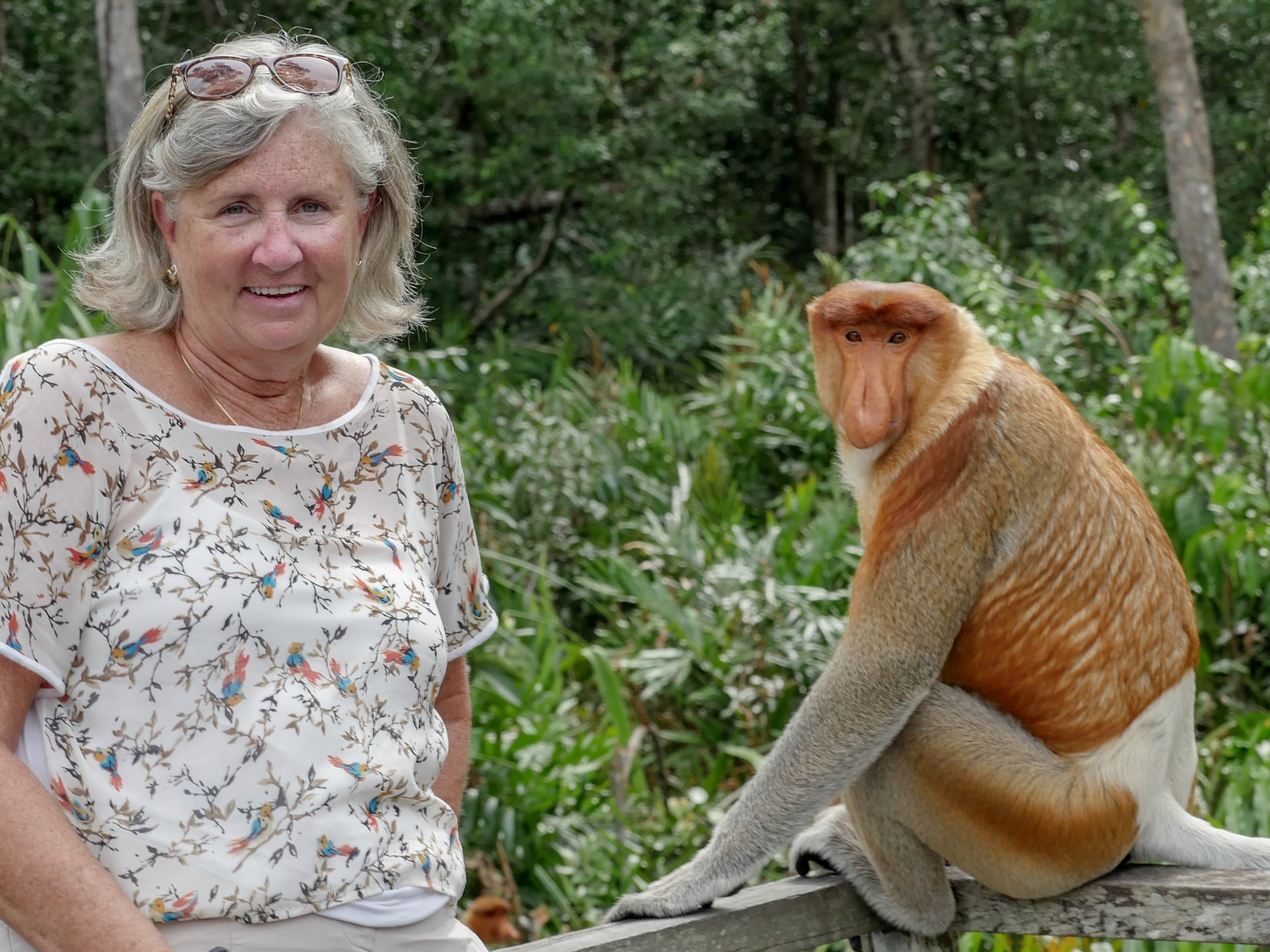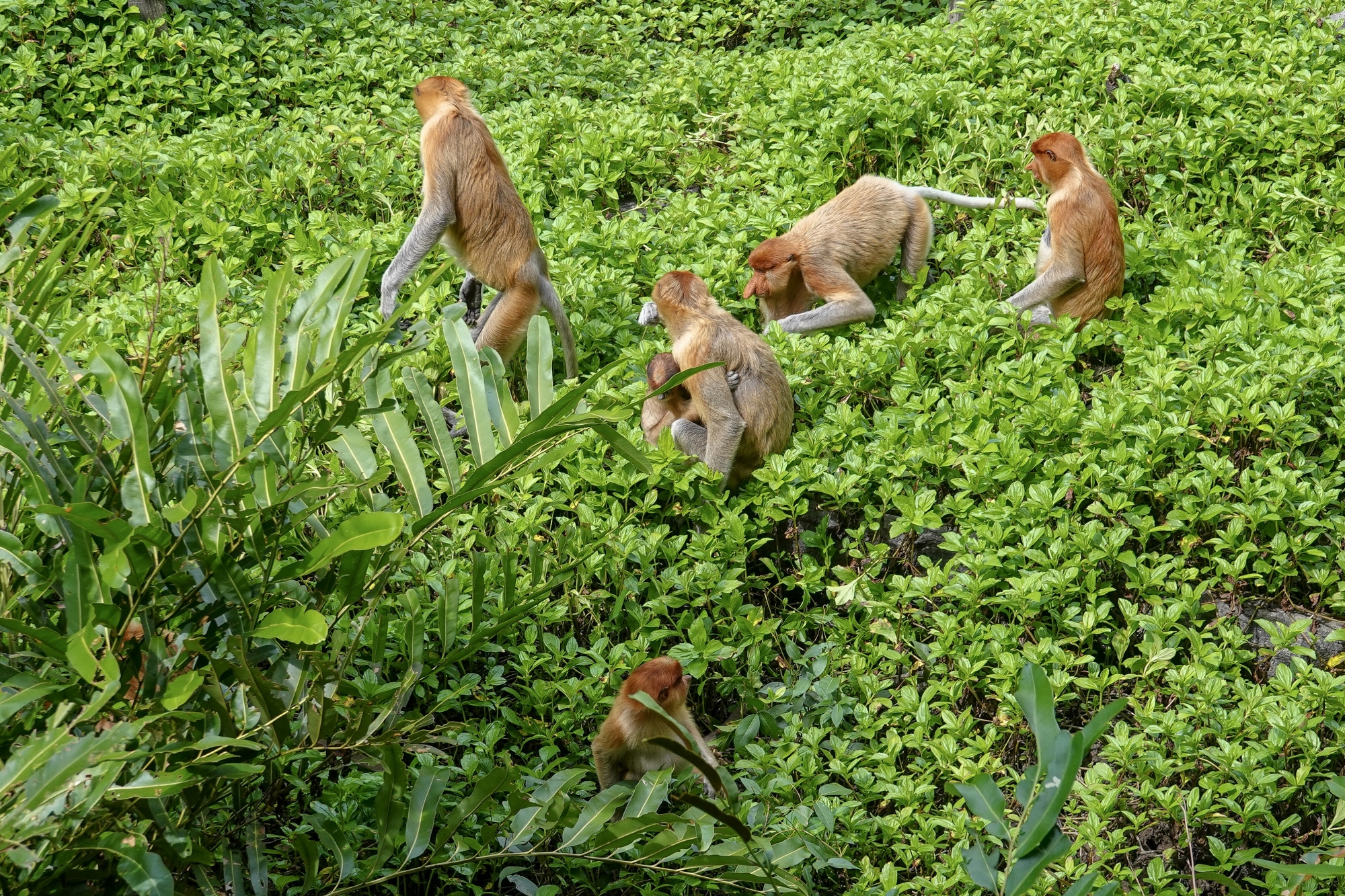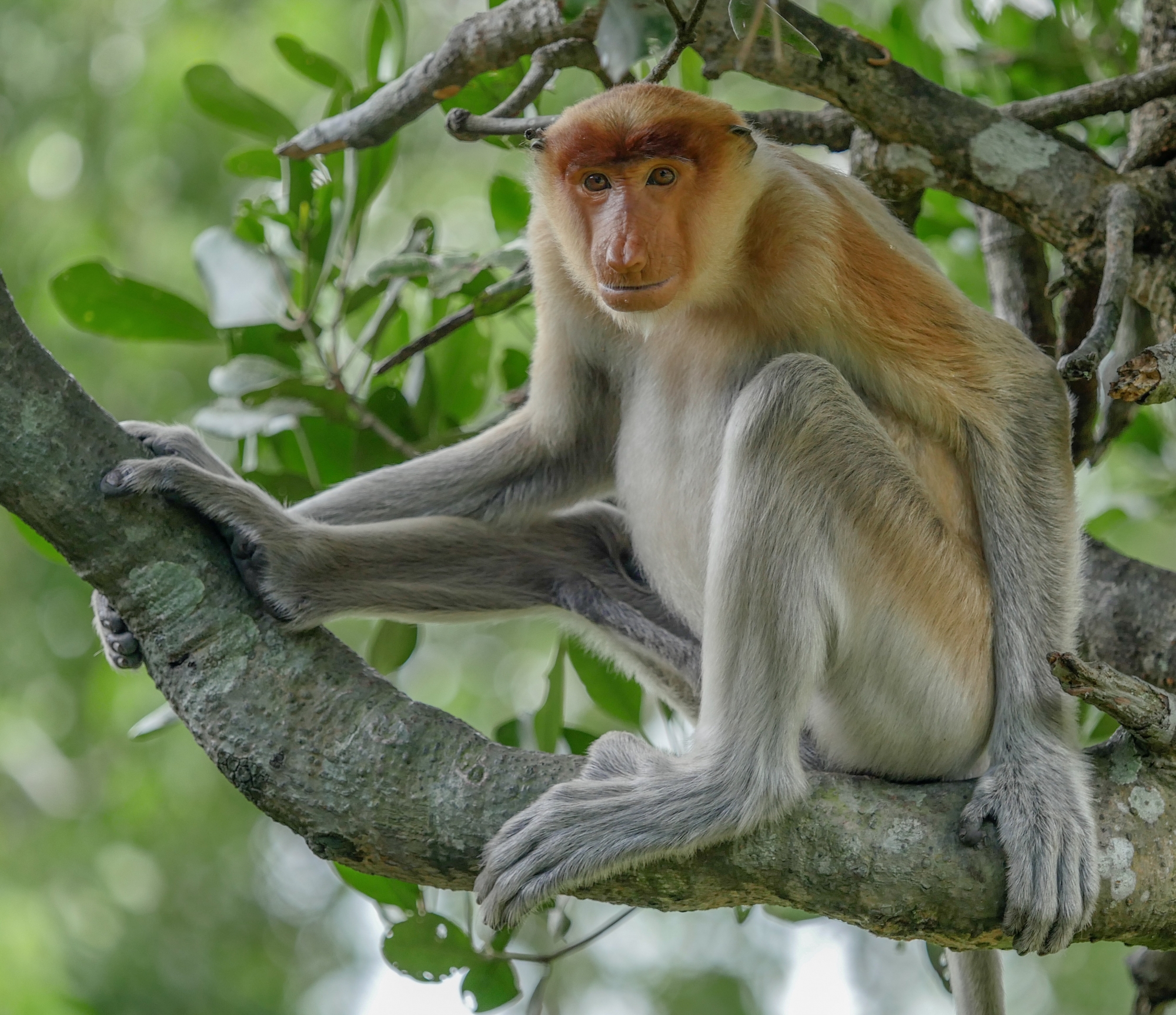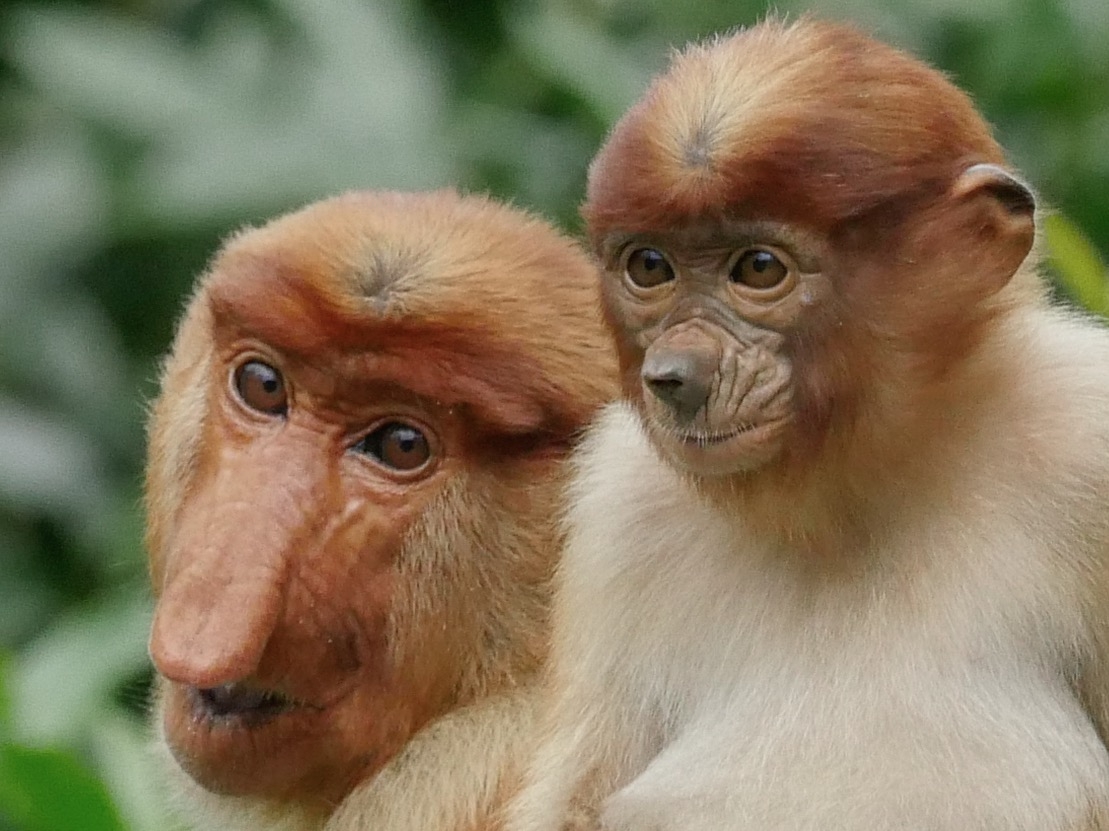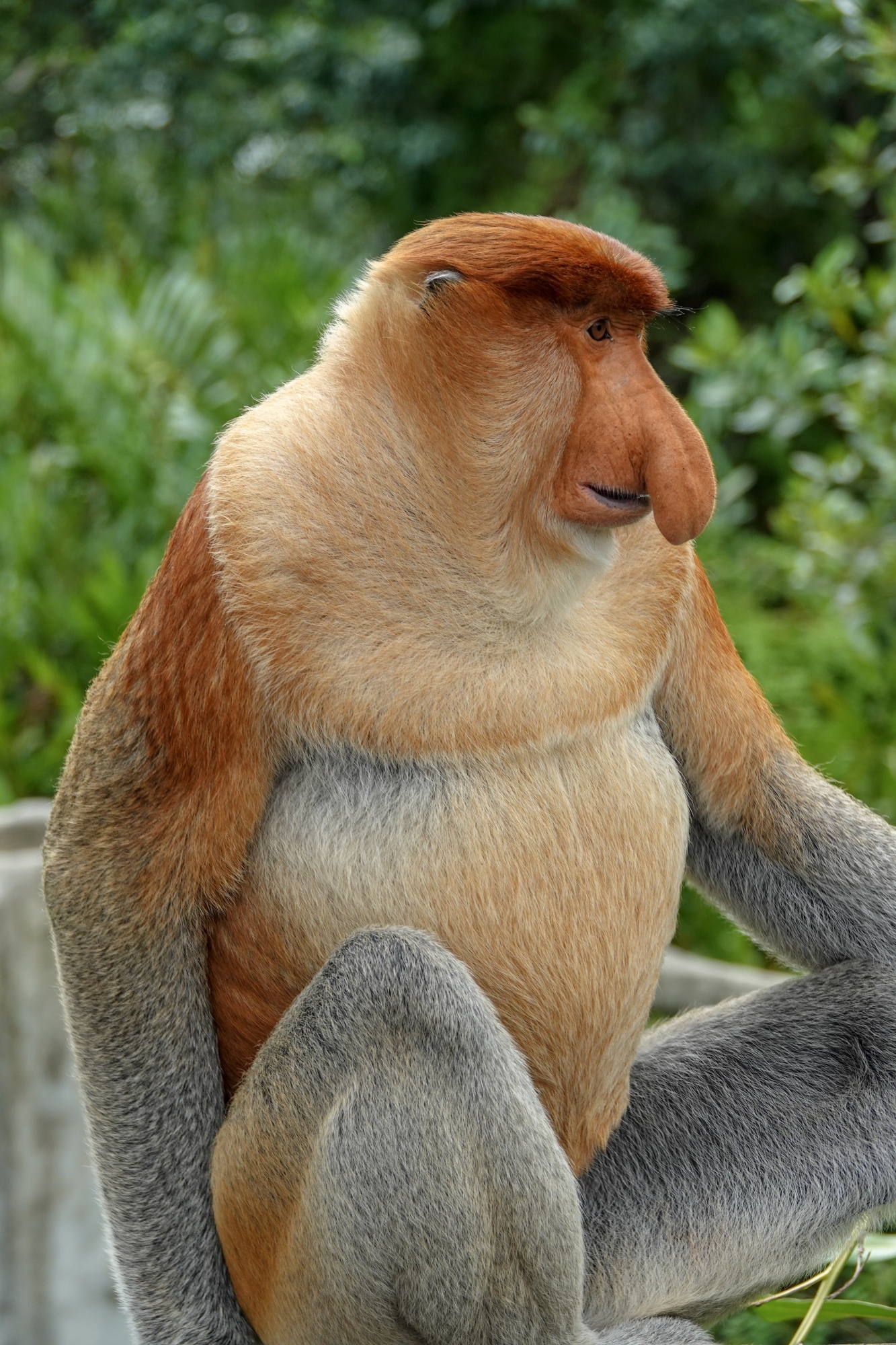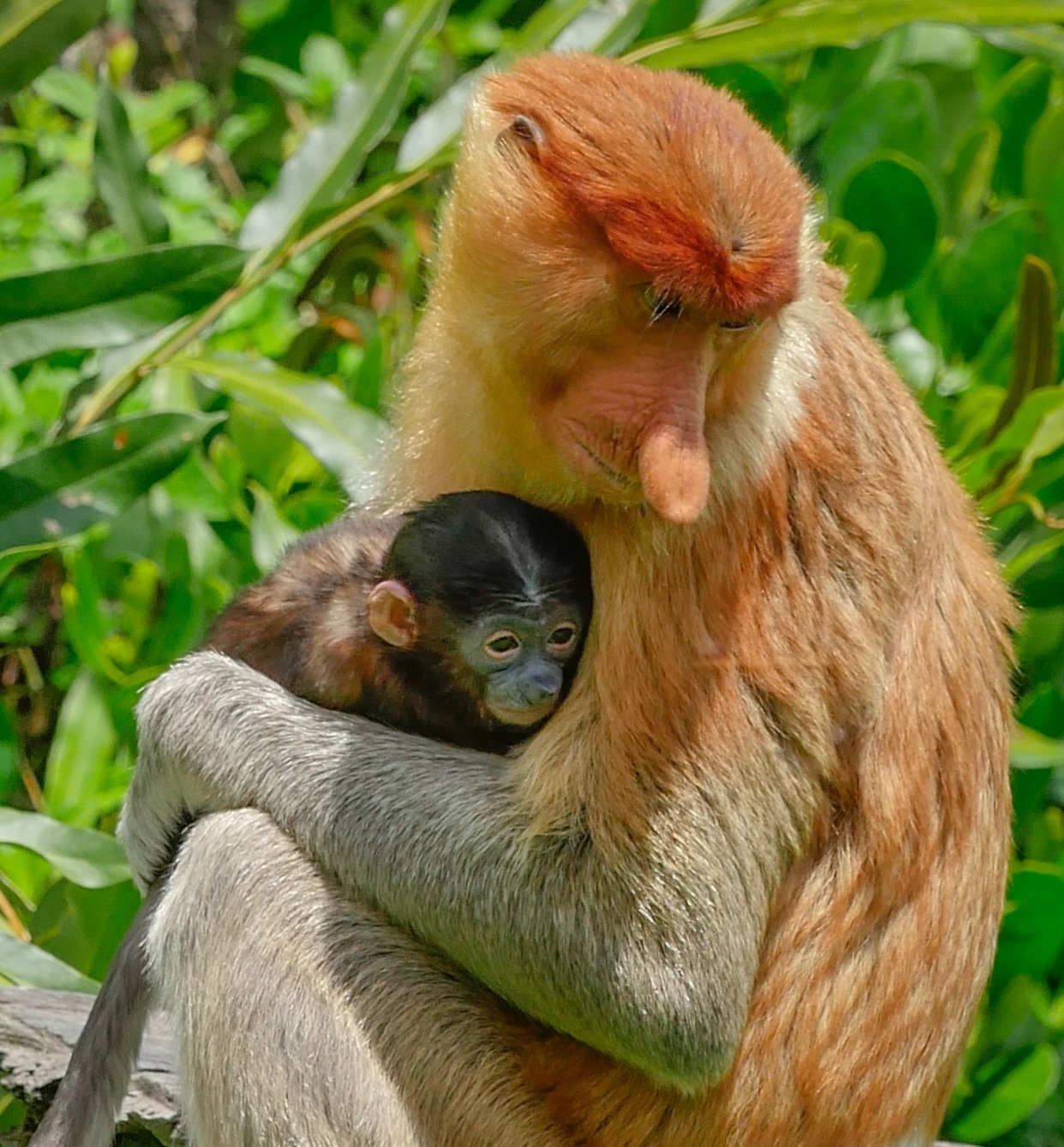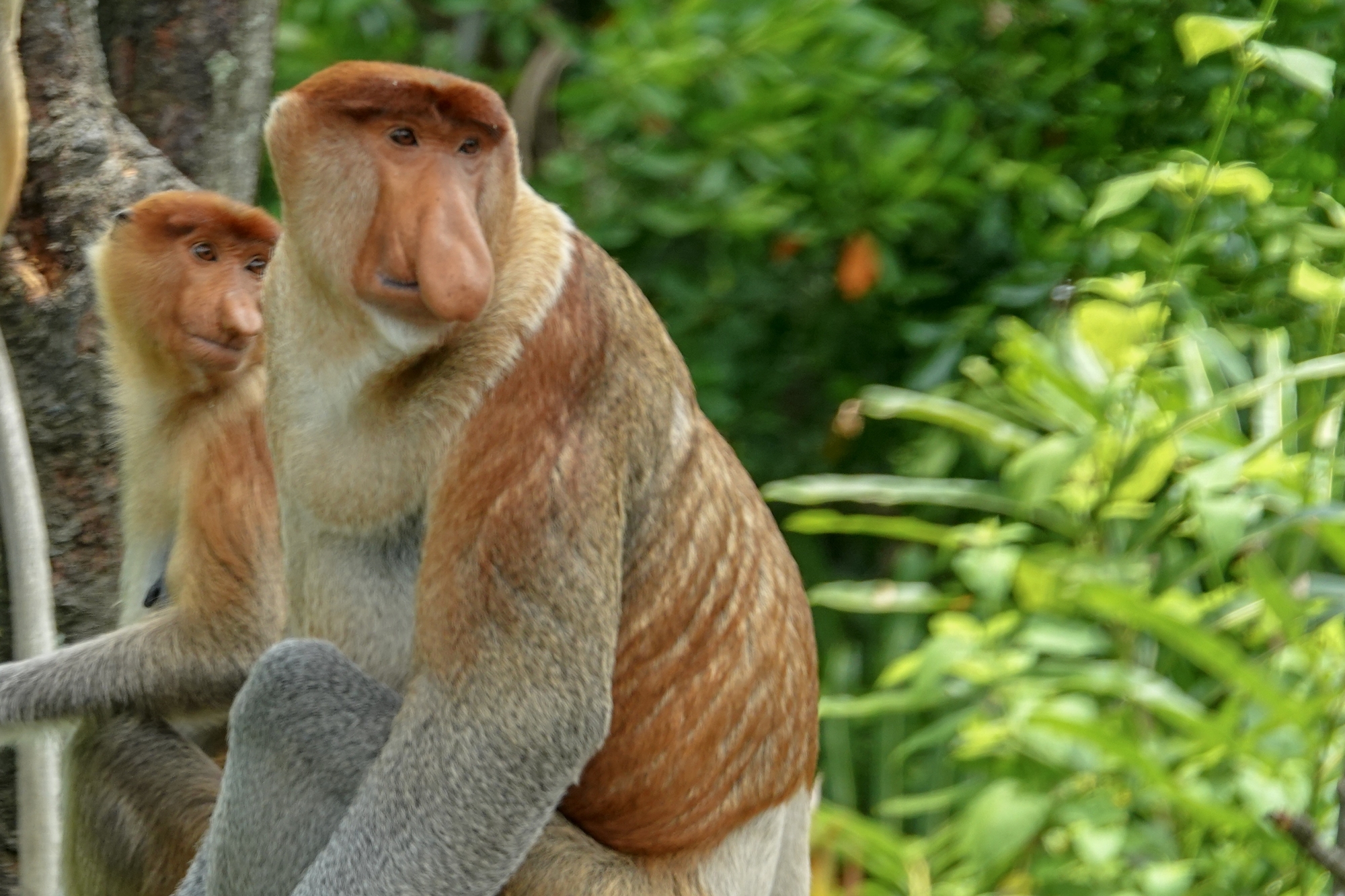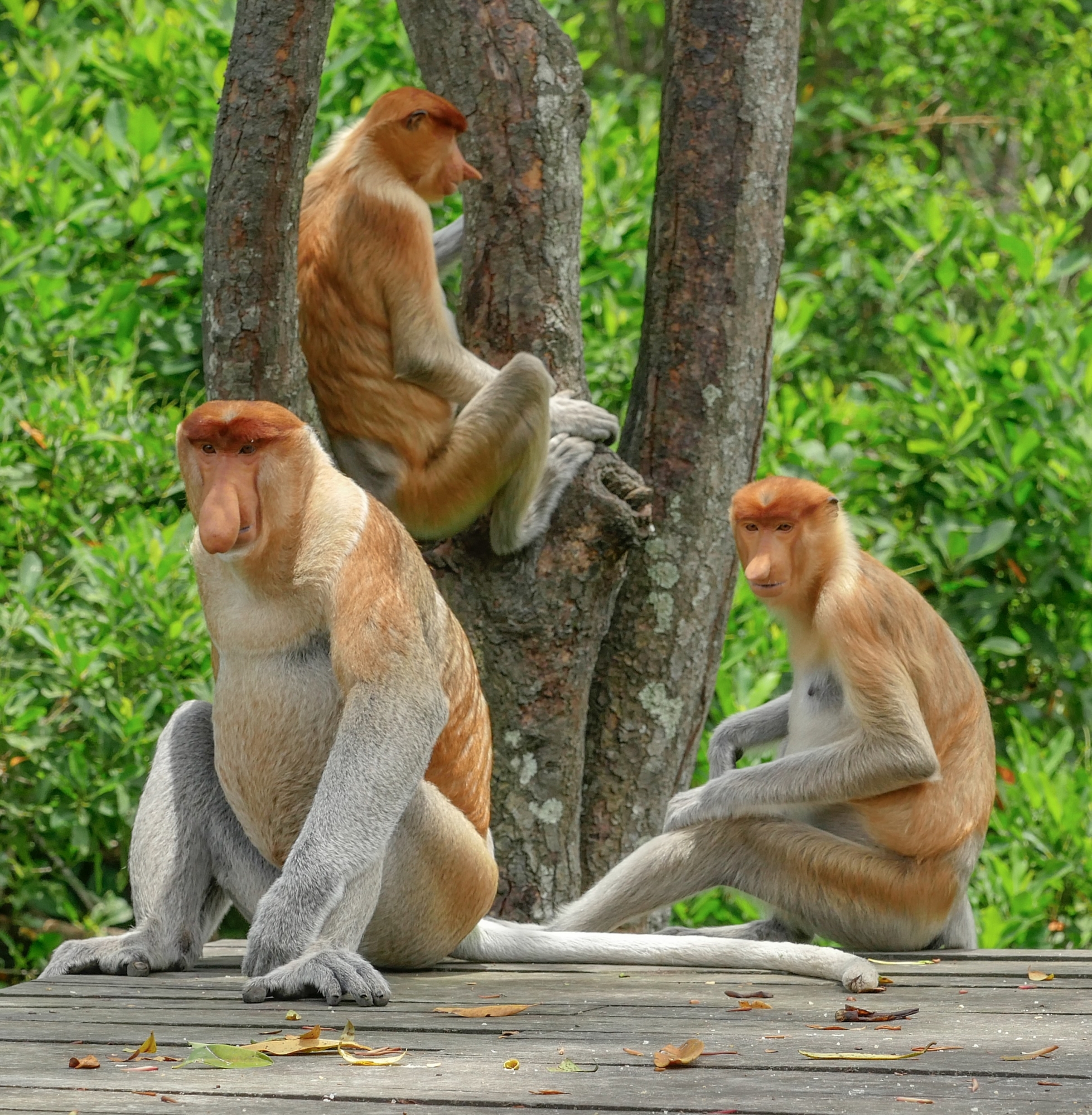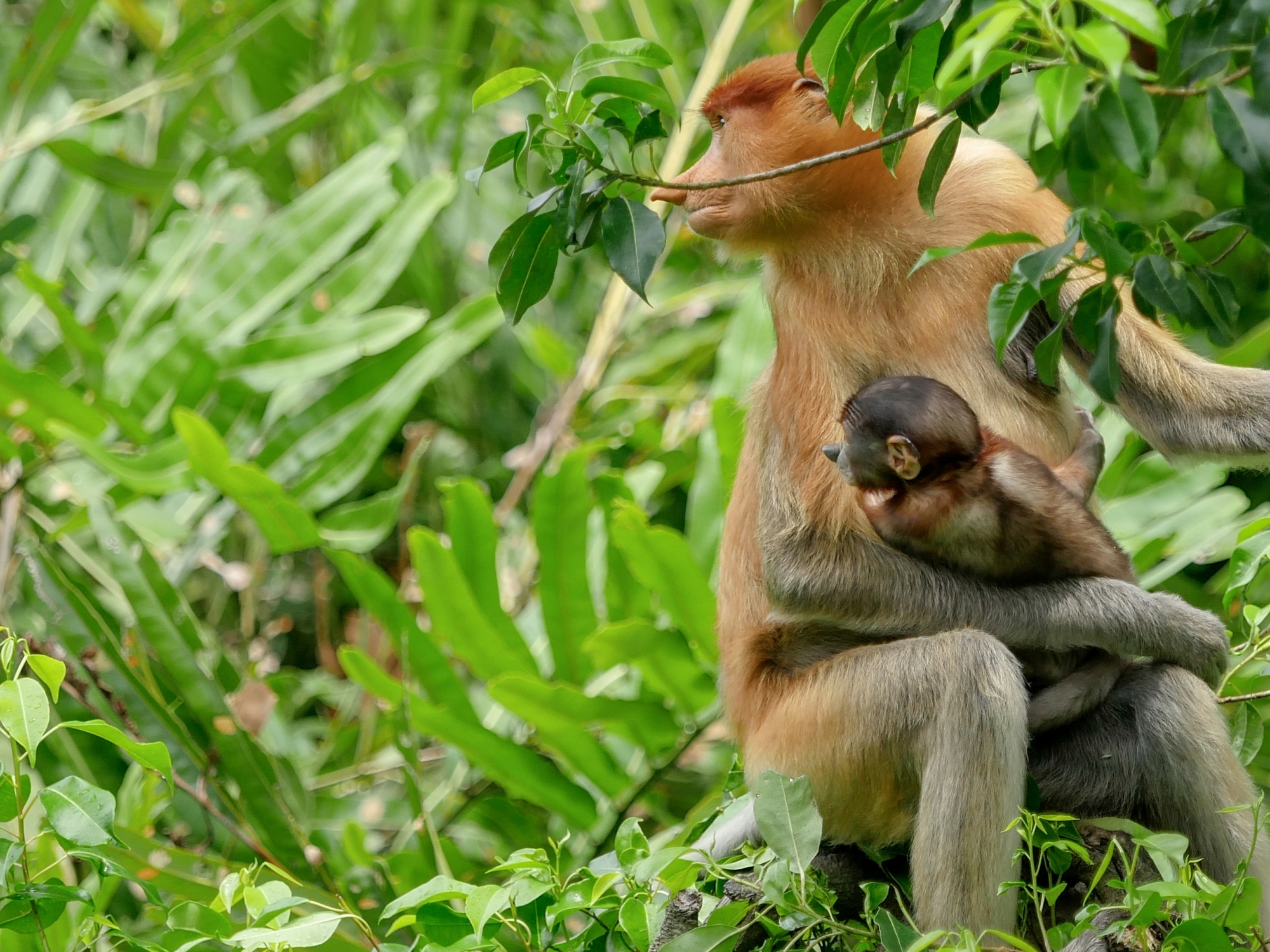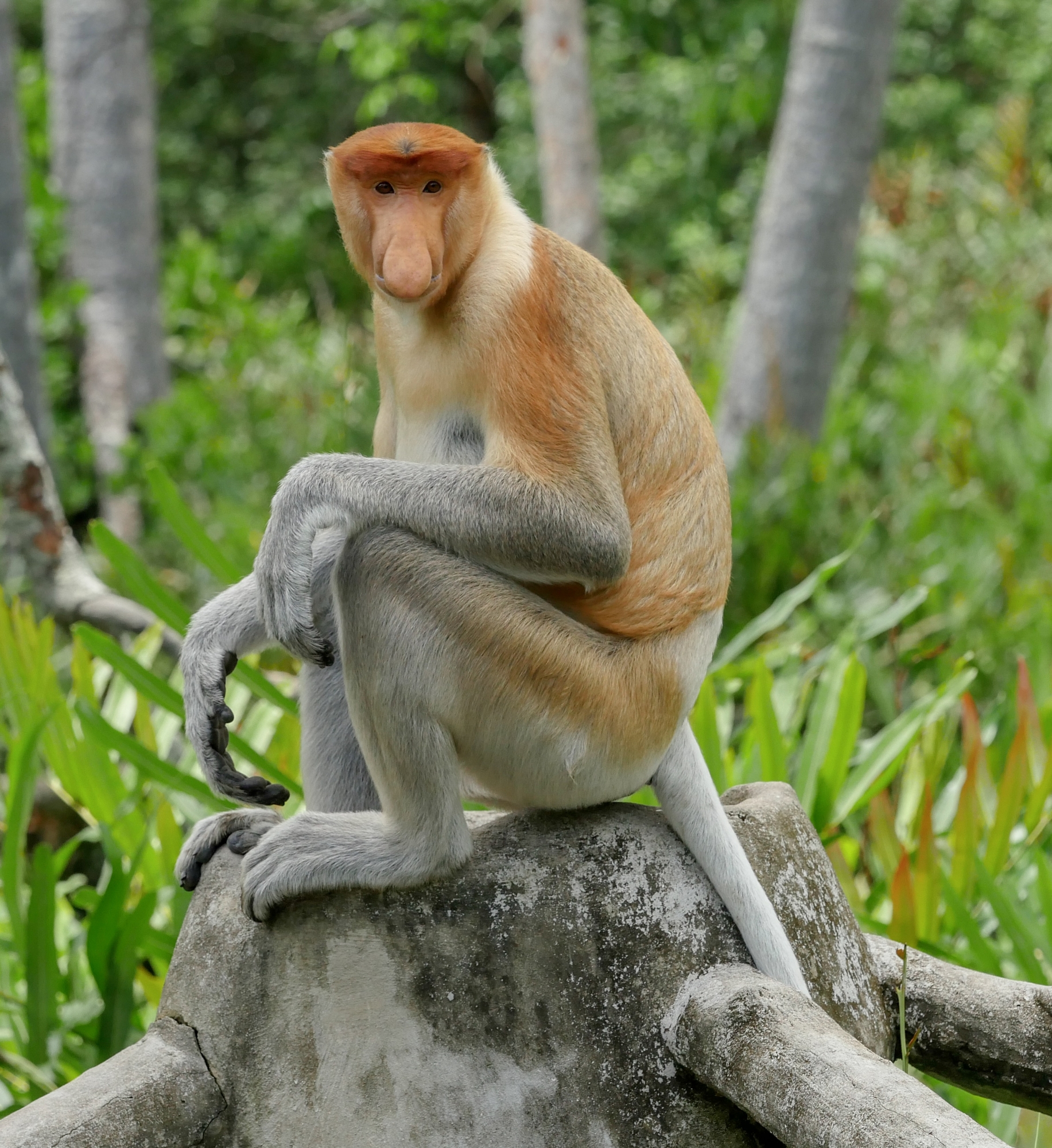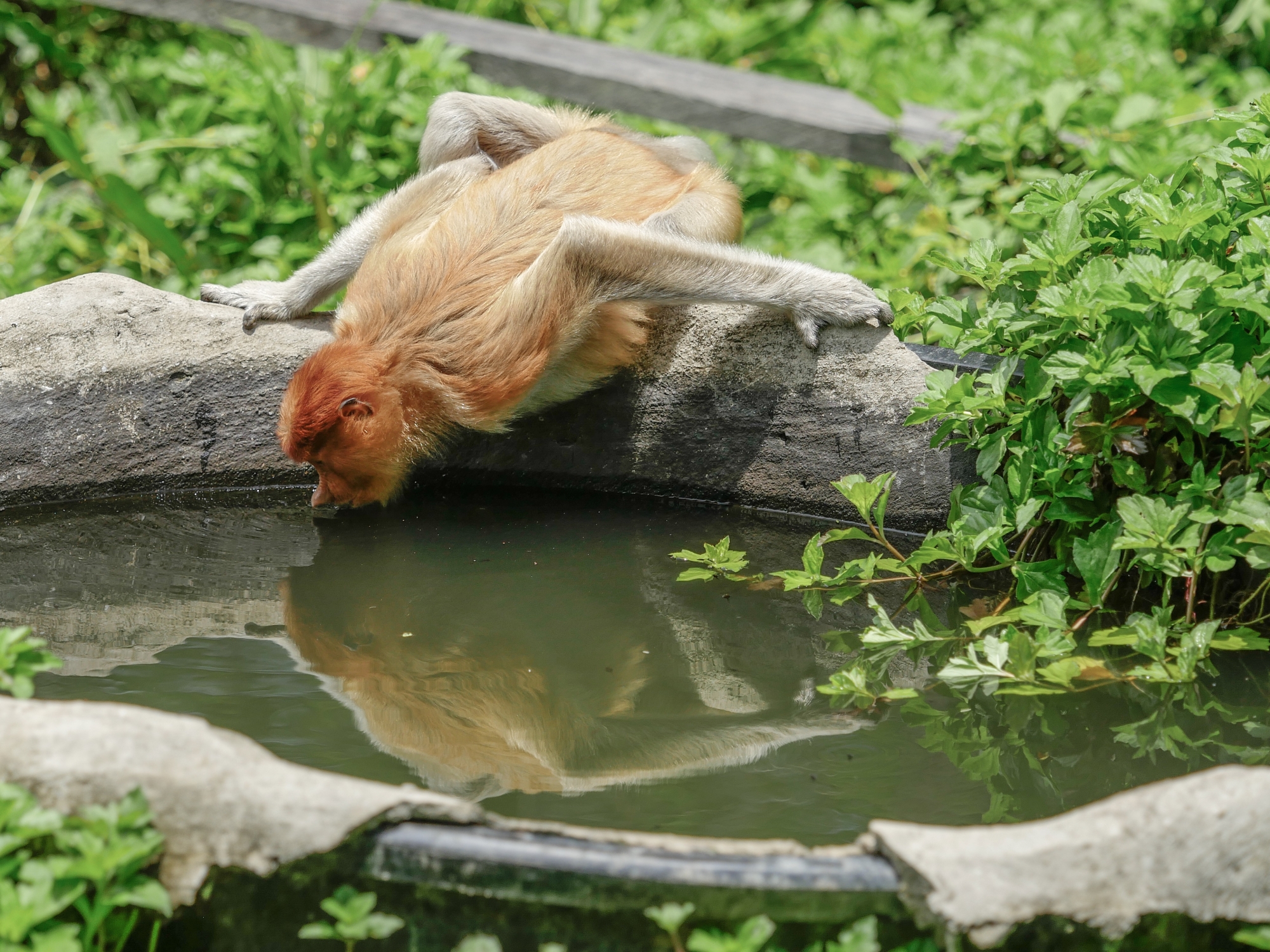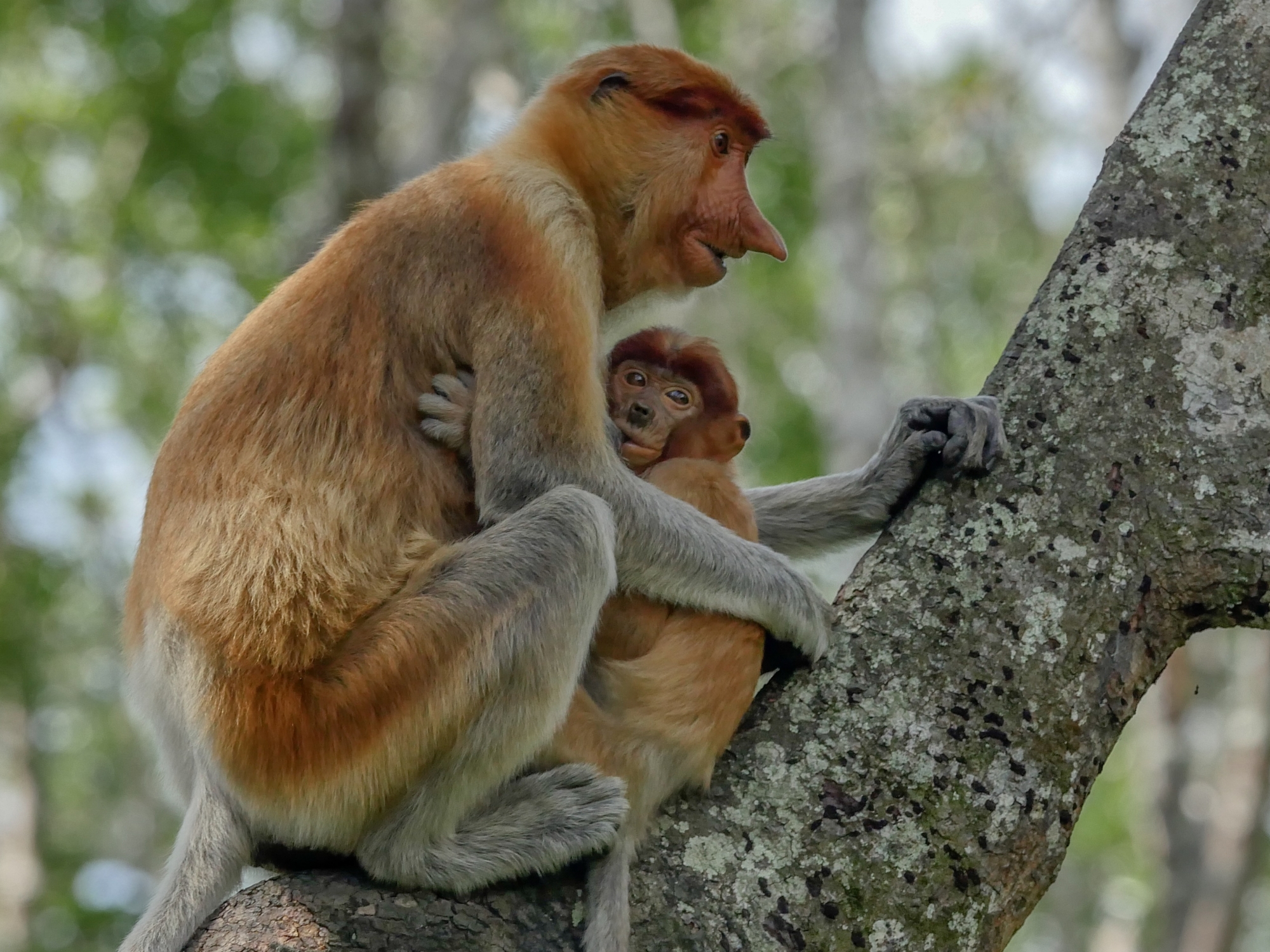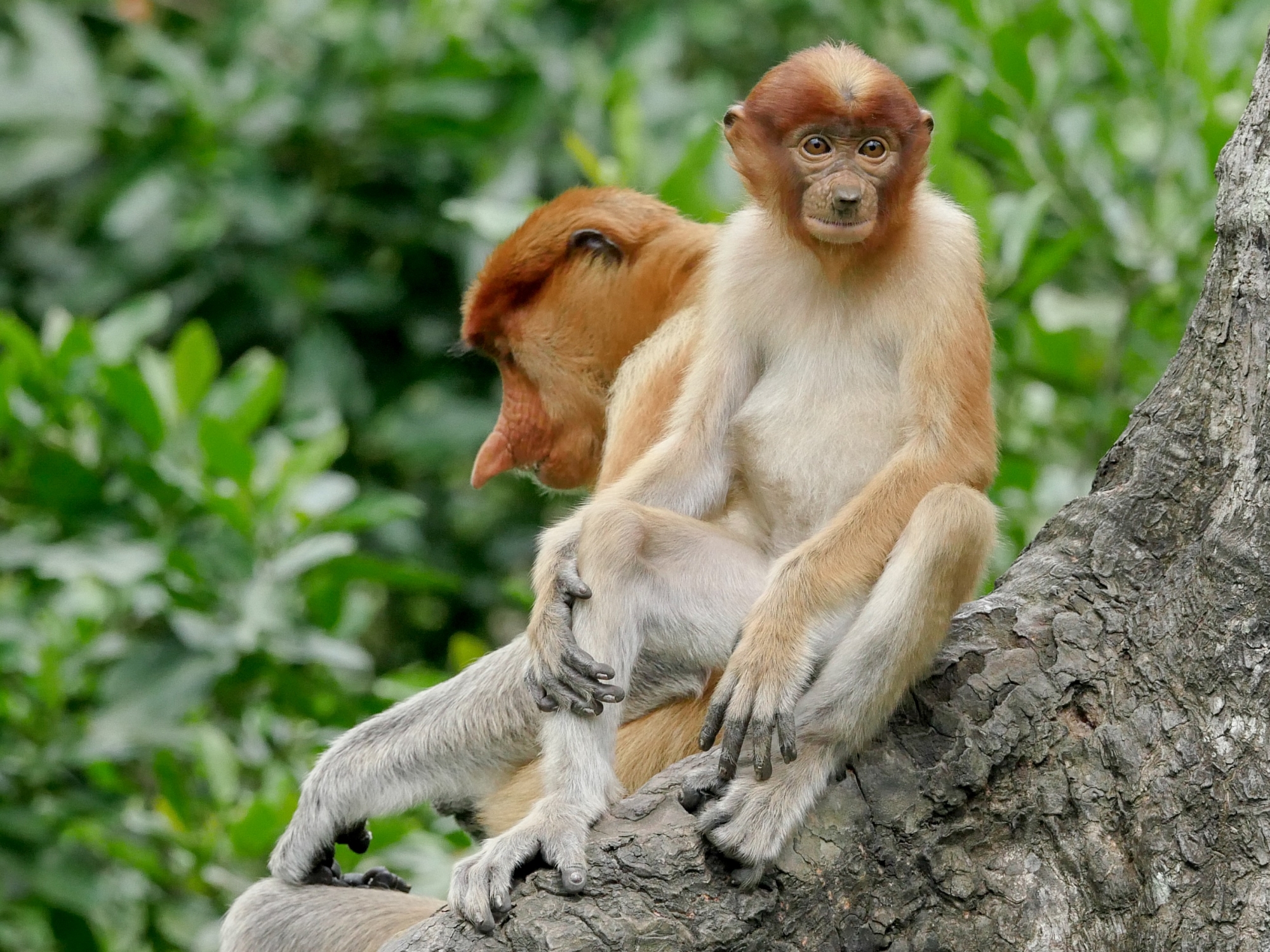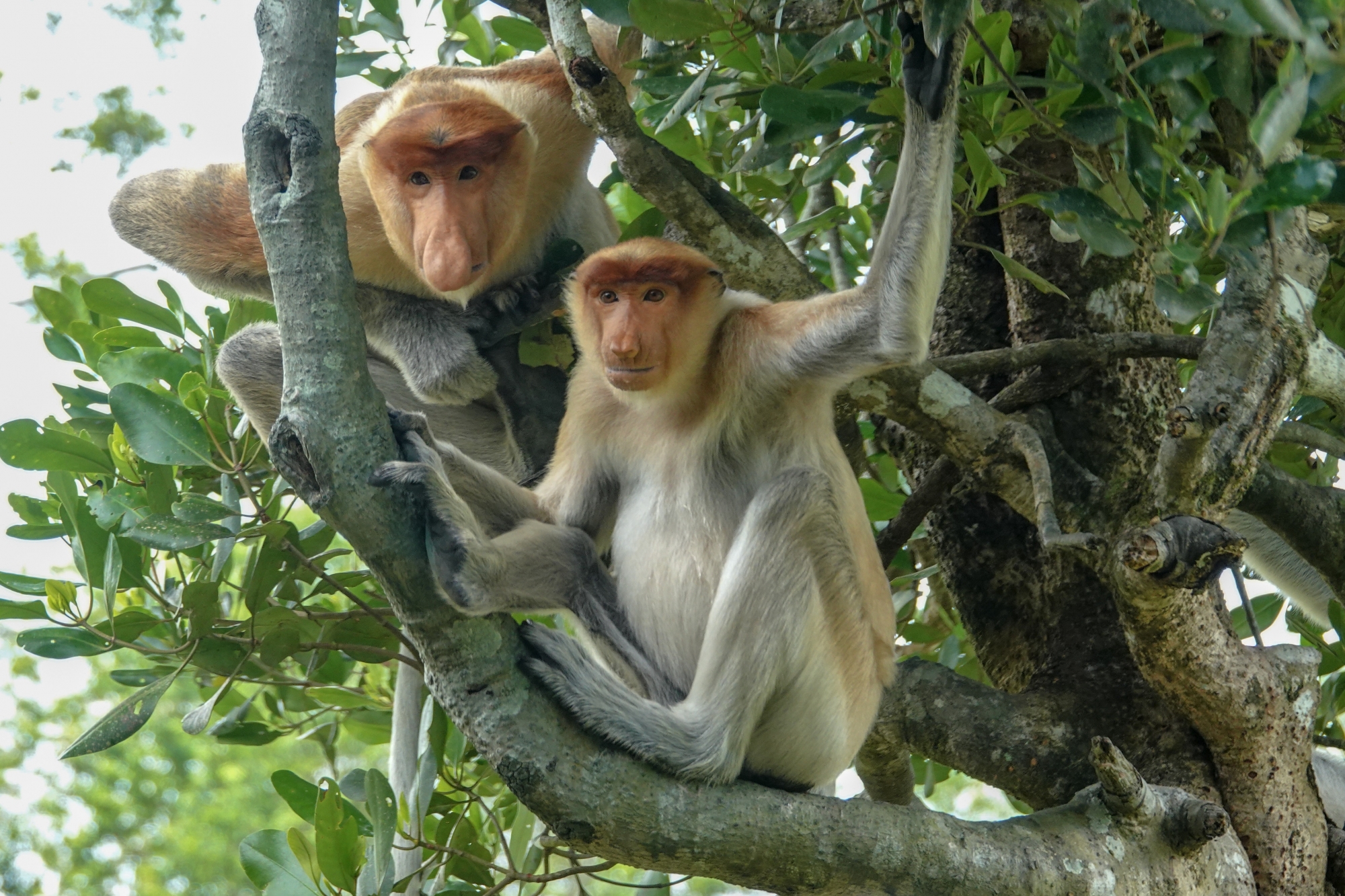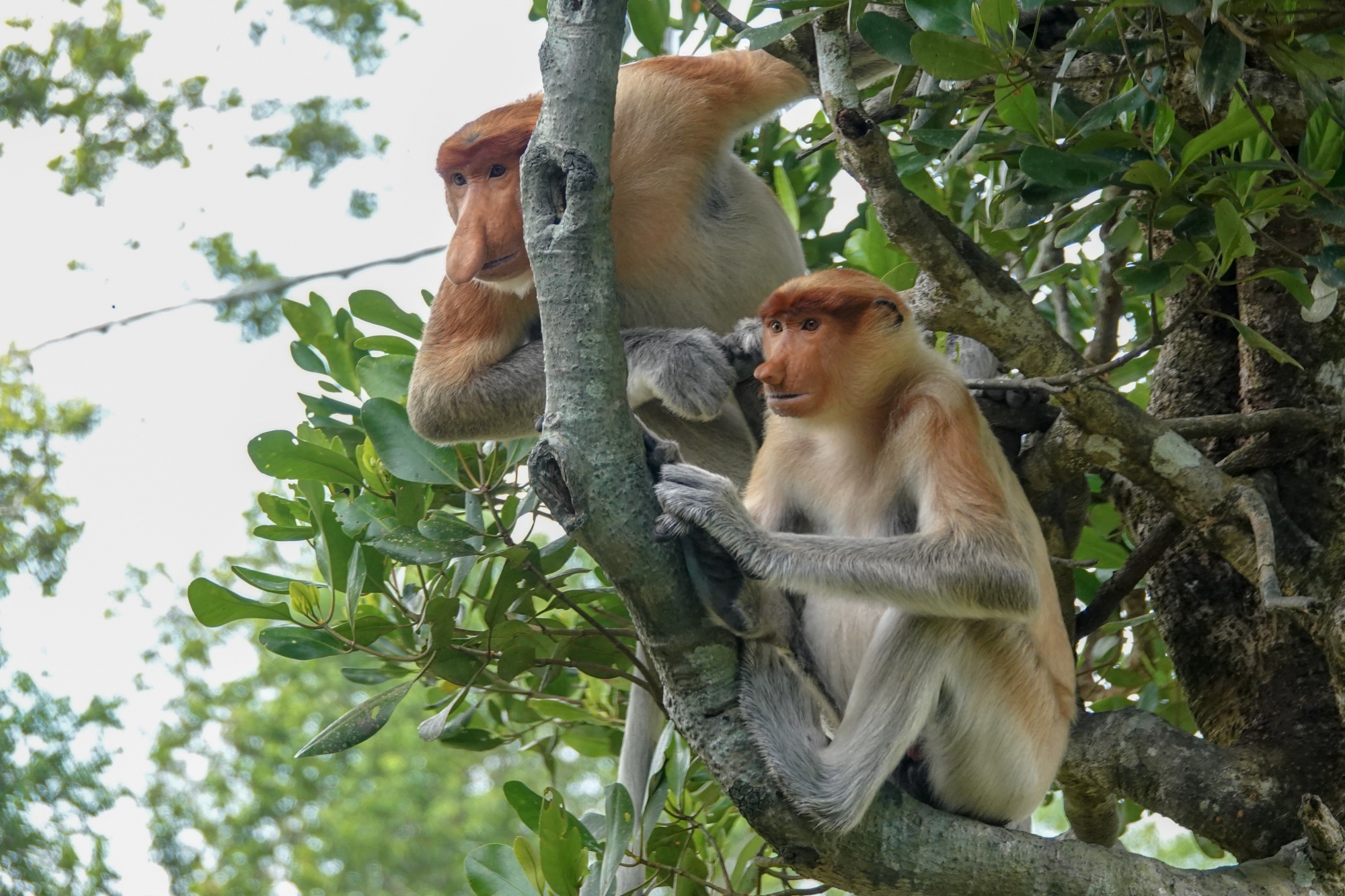The remarkable males sport big dangling noses, reddish flat top hairstyles, white tails and markings and pot bellies. The females on the other hand, are much smaller and have up-turned noses.
The male has a bigger nose than the female, and they use their big and long noses as a sex tool to … to… to attract the female. I wonder how do they kiss, huh. Another thing that amazes me is the “lipstick” between the legs of fully grown male proboscis monkey. It is red hot and pointing at 12 o’clock, always in ready mode to serve his wives. Basically, the male is having a lifestyle that every man on earth dreams of.
Lowland mangrove and riverine forests are their stomping ground and webbed feet help them out in this environment, but you’ll mostly see them leaping great distances from tree to tree. They hang out in large groups, usually with one dominant male, several females and their offspring and to the side you’ll often see a group of “bachelor males” angling to get in on the action.
Like many other primates, the proboscis monkey family is formed by a few wives and a dominant alpha male. Proboscis monkey is one of the biggest monkeys in the world. Besides their big noses, another thing that makes them very unique is their digestive system. The stomach of Proboscis monkey contains the special bacteria that can digest the cellulose and detoxify the harmful chemicals in the leaves. Proboscis monkey can’t eat banana. Anything with sugar will make the bacteria work very fast, causing fermentation that produces too much gas in their stomach, which can make them sick.
Set amid mangrove forest and reached via a track through an oil-palm plantation, Labuk Bay Proboscis Monkey Sanctuary serves as a supplemental feeding station for the monkeys. The habitat around Labuk Bay is fragmented with relatively small patches of mangrove forest, and there is insufficient food and water to support the monkeys.
The story goes, that in 1994, the owner was in the process of land clearing to expand his empire and came across several troupes of proboscis monkeys living there. Curious, he learnt more about their plight and changed his plans so they could continue to survive in their natural habitat.
At most feeding times groups of proboscis monkeys descend from the nearby forest and mangroves and head to the wooden platform for a free meal. These monkeys are wild but highly habituated and often get very close to visitors. The behavior (and diet) of these proboscis monkeys is very different from the wild monkeys that live on the Kinabatangan River and other areas of Sabah and Sarawak.


